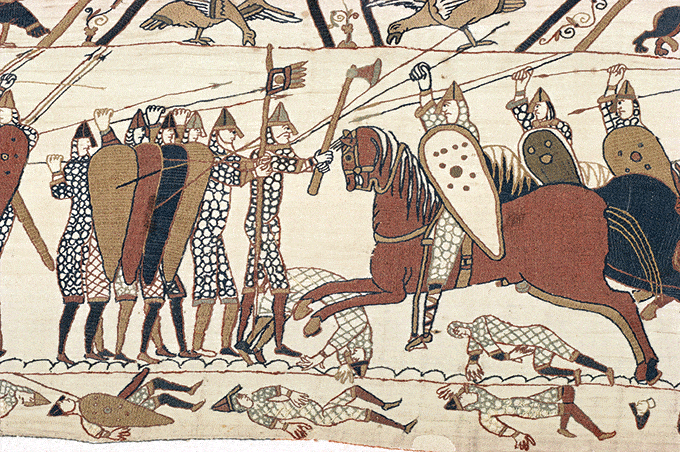
The Battle of Yarmouk Transformed the Middle East
In 634, Arab tribal armies fired by Islamic zeal erupted from the sparsely populated Arabian Peninsula to simultaneously attack the day’s two superpowers, the Sassanid Persian Empire to the east, and the Byzantine Empire to the west and north. Within two years, the outnumbered Arabs had won a series of brilliant victories that would forever after reshape the Middle East.
The Sassanid Empire would fall, while the Byzantines would forever lose their possessions in Syria, Egypt, and North Africa, and get pushed back to today’s Turkey. Of the Arab victories between 634 – 636, the most decisive was the Battle of Yarmouk in August of 636 along the Yarmouk River, southeast of the Golan Heights, near where the borders of today’s Syria, Jordan, and Israel meet.
In 634, the Arabs launched simultaneous attacks against the Persians in Mesopotamia, and against the Byzantines in Syria, but the forces attacking Syria proved too small for the task. Accordingly, reinforcements were diverted from the Persian front, where things were going smoother, under Khalid ibn al Walid, who assumed command in Syria. In July of 634, Khalid routed the Byzantines at the Battle of Ajnadayn and seized Damascus, then won another victory soon thereafter at the Battle of Fahl, and seized Palestine.
The Byzantines set out to recover their lost territories, and assembled an army of 80,000-150,000 men according to modern estimates, that significantly outnumbered their 25,000-40,000 Muslim opponents. The Byzantine marched in five grand divisions to the Yarmouk, where they met an Arab army broken into 36 infantry and 4 cavalry regiments, with an elite cavalry force held back as a mobile reserve. Khalid assembled his army along a 7.5 mile front facing west, with his left flank anchored on the Yarmouk river, and his right on heights to the north.
The armies then spent months camped across from each other, while their leaders engaged in negotiations. Fighting finally began on August 15th, 636, and lasted for five days of attritional warfare during which the Arab armies remained on the defensive, and withstood repeated, but often poorly coordinated, attacks. Finally, on the sixth day, Khalid drew his opponents into a large scale pitched battle that ended with the Byzantines retreating in disarray. Retreat turned into rout when Khalid unleashed his cavalry, who charged with a fortuitous sandstorm at their back, and many panicked Byzantines fell to their death over a steep ravine.
The Byzantines lost an estimated 40,000 men, while the Arabs lost about 5,000 men. Nearly a Millennium of Greco-Roman rule and influence of the Eastern Mediterranean and North Africa came to an end, as the successors of Alexander the Great and Julius Caesar were replaced by the successors of Muhammad. Syria was forever lost to the Byzantines, and soon thereafter, they would also lose Egypt and North Africa. Thereafter, those territories would form the core of the Arab and Islamic world, while the Byzantines would find themselves confined to today’s Turkey and the Balkans.

